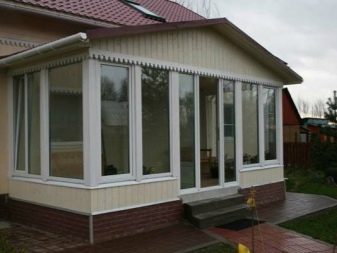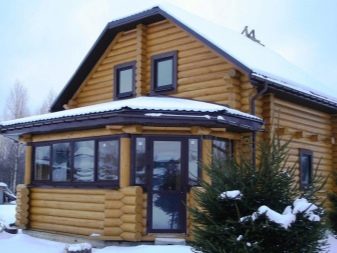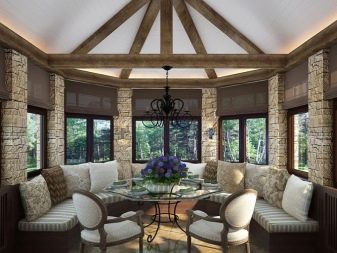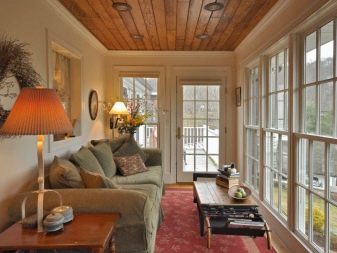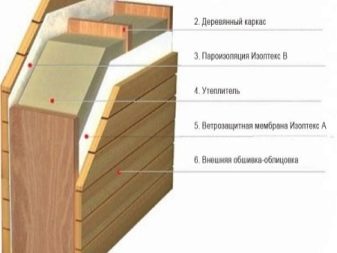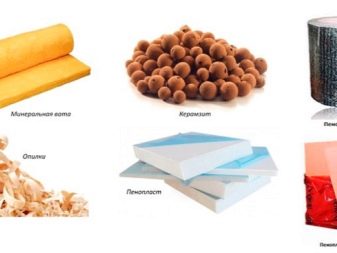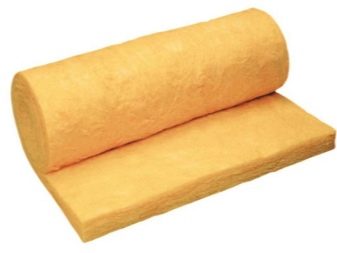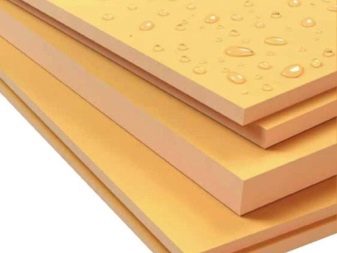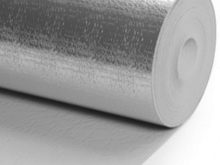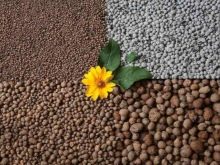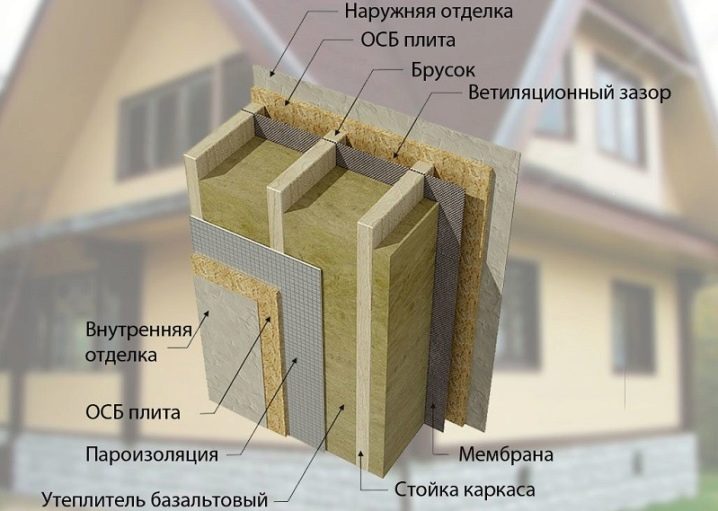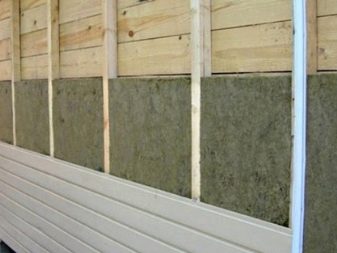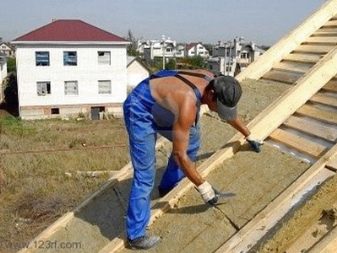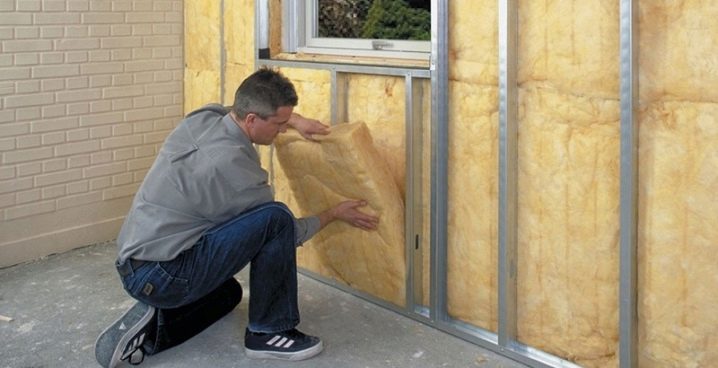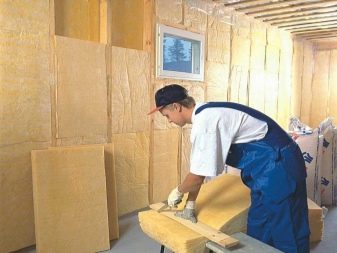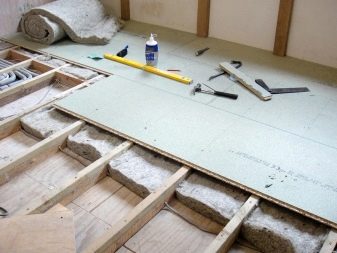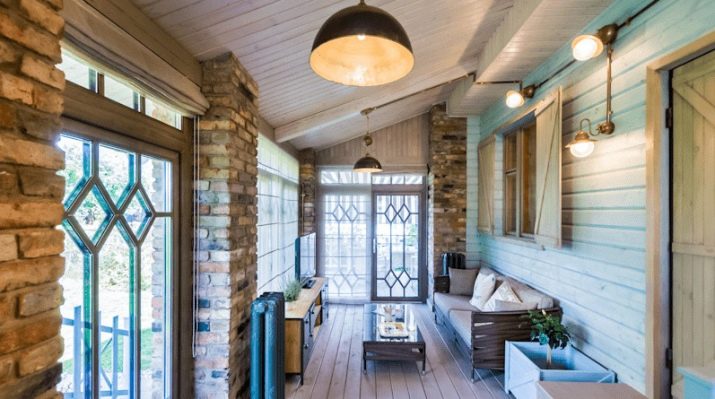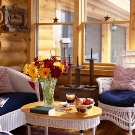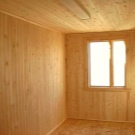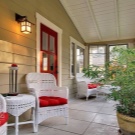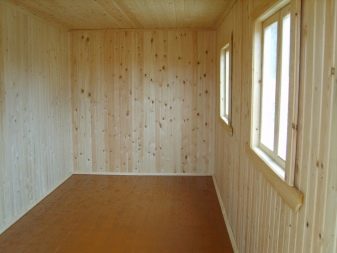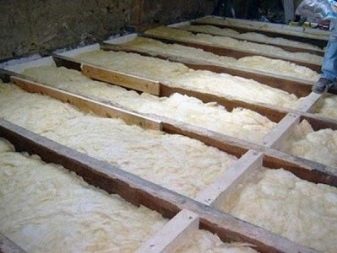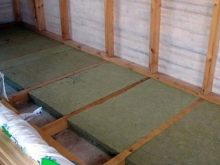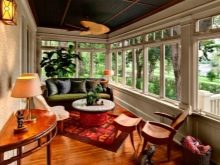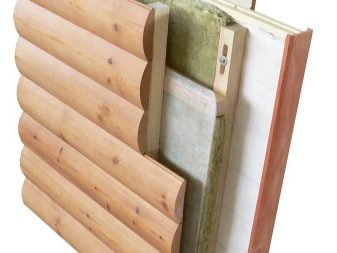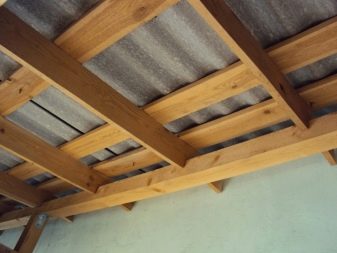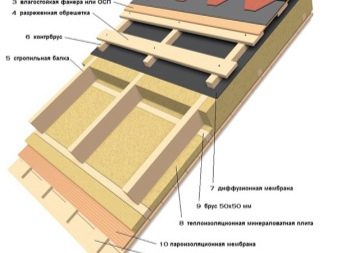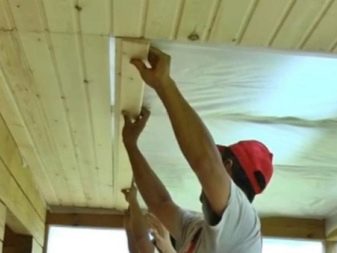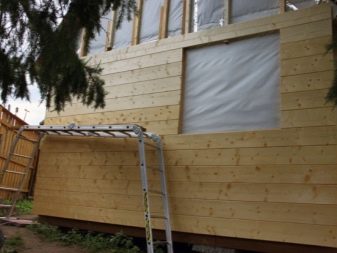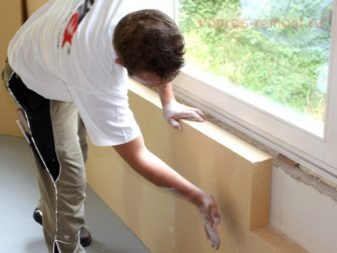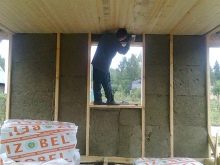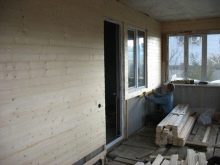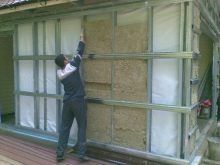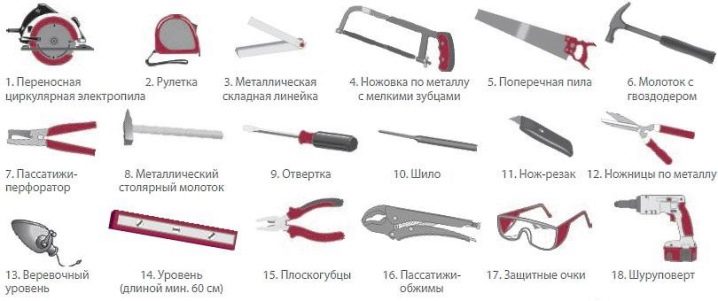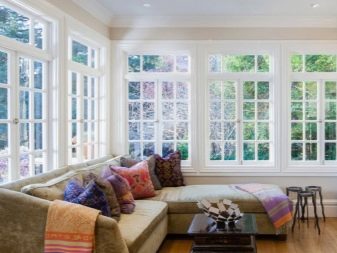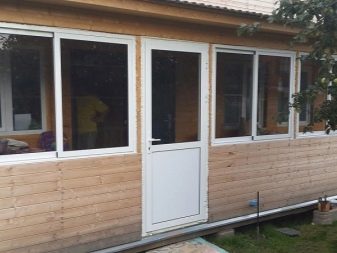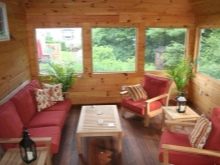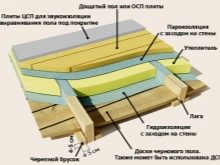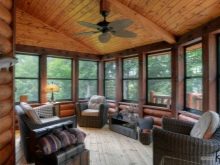Warm verandas: ways of warming
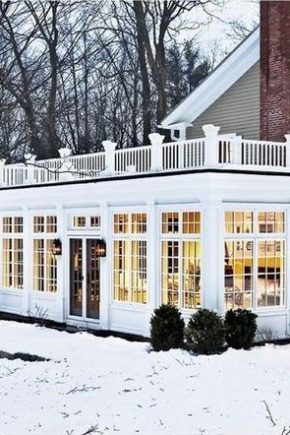
Recently, many people are wondering how to insulate the veranda and make it suitable for use at any time of the year, because everyone wants to take a break from urban worries in nature, get together with family or friends and sit for a cup of tea or coffee. One wants to do this not only in summer, but also in winter evenings, looking through the glass windows to nature.
Features of the extension
Veranda in the country or in a private house is a glazed on all sides or partially room, which is either built immediately or attached later to the already finished house. In summer, when it is warm outside, this is the best place to relax, rest or arrange family gatherings.
Due to the fact that the veranda has many large windows, the whole circle will be in full view - this will allow you to admire nature while sitting in a chair or in a comfortable chair. And if the veranda is warmed, then this kind of rest can be extended in winter. Plus, everything else, you can organize a beautiful winter garden or greenhouse.
What is better to use?
It is possible to be engaged in warming of a verandah at any time year. However, it is better to do this in good weather so that the selected material is not damaged. First you need to decide on the materials, as well as make all the necessary measurements. The range of insulation in the modern world is quite extensive and depends primarily on the finances of the owners.
Choosing materials, you need to pay attention to their properties. Any insulation should be non-toxic, resistant to fire and to any weather conditions of nature. Such materials as penofol, mineral wool, expanded clay, polystyrene foam and other types of heaters are suitable for insulating the porch. In order to facilitate the selection, one can consider in detail the quality of these materials.
- Mineral wool. Such material has been used in construction for a long time, because it has many positive qualities.This is, first of all, an affordable price. In addition, cotton wool is non-combustible, keeps heat well, is not subject to temperature changes and chemical effects. This material is great not only for insulation, but also for sound insulation. It is pleasantly pleased that any person can put it. However, wool has its drawback: over time, there is a loss of thermal insulation properties, which affects the further operation of the building.
- Styrofoam. The material has a low price and is also durable and easy to use. The most used material is extruded polystyrene foam, which best protects the premises from heat loss. However, it has the disadvantage of high flammability, and during ignition it throws toxic substances into the air.
- Styrofoam. This material is also very flammable, besides it is loved by small rodents. However, this insulation has advantages. For example, it is easily mounted with or without a frame. Also, the foam has a very high thermal protection, which does not lose its properties throughout the service life of the material.It does not need additional coating stages, as it has a low vapor permeability.
- Penofol. Such products can be used with other insulating materials, and independently. The material has low vapor permeability and a high degree of environmental friendliness. In addition, penofol has such a quality as non-inflammability.
- Expanded clay - It is a material consisting of baked clay and having the appearance of porous granules. It is used mainly for insulation of the ceiling and floor.
You can also use a portable heater to insulate the veranda or even install an electric boiler. But for the installation of such equipment will need to complete the project, agreed in different instances. Therefore, the easiest way to use the heater. It may be the most common, but if finances allow, you can spend money on a model with additional functions.
Warming of the veranda can be done both outside and inside. And in fact, and in another case, you should do everything carefully so as not to spoil the appearance of the room. First you need to determine which side to warm. To help determine the choice will help a detailed overview of each option.
Outside
Most often they warm the outside part of the veranda. This process is quite simple, the main thing is to decide which materials are better to deal with.
Such work should be carried out in good and warm weather. It is necessary to insulate the ceiling with mineral wool or penofol. Then you need to make the walls with polyurethane foam or other similar materials and close it with any finishing.
External insulation has several advantages.
- All insulation work is carried out on the street, which is very good, because all the garbage remains outside and cleaning takes less time.
- Work with materials does not interfere with household members to go about their business.
- The size of the veranda does not decrease by one centimeter.
- Having finished the walls with special materials, you can keep the heat on the veranda for a long time. Plus, it will not eat up, which makes it possible to extend its service life.
The only drawback is the weather conditions, because in rainy weather it is impossible to perform warming.
Inside
Internal insulation can be carried out at any time of the year, as well as in any weather, and with your own hands.By choosing this option, you can carry out the work on the insulation quickly and in one step. This is convenient if you do not want to spend too much time on repairs.
There are also disadvantages:
- the need to dismantle the already existing cover;
- area reduction;
- fragility - the wall assumes all weather conditions, which can lead to its destruction.
How to warm?
While setting up your house, you cannot take everything into account at once, so the question of using a veranda for winter living is not worth it. Often, such additional buildings or extensions do as temporary housing for the season. But sometimes plans change, and the question is how to properly warm the room.
Many people use the veranda for a winter warehouse or as a summer kitchen. However, only a few people think that a non-heated veranda almost always forms condensation with temperature drops, which means that the level of humidity in the room is high. To avoid this, it is necessary to properly insulate the building.
First of all, it is necessary to warm the walls, as well as the floor and ceiling. It does not matter which extension is wooden or brick. A lot of heat is lost through the windows. Therefore, they must be made double or replaced with new ones.
It is also necessary to warm the doorway. You can make it double so that there is an airbag between the doors, leveling the temperature difference.
The correctness of the insulation depends primarily on the material used.and also for what purposes the premises will be used. For example, if it is a wooden house, insulation should be done inside, which will avoid the accumulation of moisture. Conversely, if the house is brick, then the walls must be insulated from the outside, and the ceiling and the floor - from the inside.
Floor
If there is a need to warm the veranda for the winter, it is best to start work from the floor. After the foundation is made, set the strapping of the bars on the supports.
Before this, it is necessary to treat them with protective agents. Then install the crate and fix the overlap. You can even make the floor of unedged boards with a thickness of 25 mm. This floor is also called "draft".
And only after that, the material for insulation is placed on the already fixed boards. To protect it from moisture, perform a layer of vapor barrier. For reliability, you can put a double or triple layer of insulation, laying it in different directions at an angle of 90 degrees.For thermal insulation, it is desirable to use solid materials. For example, expanded clay on which beams are laid. And only after that they do the floor covering completely.
If such a process was not performed initially, then the first thing to do is to dismantle the old floor covering. At the same time, it is necessary to see how the boards were fastened - with nails or screws. To do this, use tools such as a nail puller and screwdriver, with which you gently pull or drill screws. If the roughing is available, then immediately proceed to the insulation process. Everything is performed on the same principle as described above.
Walls
The next stage is wall insulation. It is possible to warm both a high-grade veranda, and an extension, which has not been actively used before. You must be prepared for the fact that the wall covering will need to be completely replaced.
Using a tool such as a nail puller, they are removed from the wall of the board. To leave no traces on them, it is better to lay a piece of cardboard. This should be done carefully, because after insulation, they should be mounted in its original place.
After dismantling is completed, it is necessary to check whether a vapor barrier is available. In case of its absence, the material is attached between the racks. This can be done using a stapler. Insulation can make foam, because it is not afraid of temperature changes and is resistant to the influence of different microorganisms.
Conversely, if the walls are made of brick, it is necessary to make a crate of wooden boards or bars, which will ensure air circulation. Outside the wall must be sheathed material of any kind.
It is also very common method of insulation using penofola, which is cut into pieces of the desired size. It is attached to the walls, and the edges are fixed with scotch tape. Next comes the foam, and it is very tight. The final stage is painting.
Ceiling
To insulate the ceiling, it is necessary to mount a hydro-barrier, then sheathe it with boards of 2.7x2.7 cm, while leaving gaps of no more than 8 mm. The seams should be sealed with metal tape. Insert the penoplex fixed between the boards, fixed with dowels with a big cap. Then the heat reflector is laid, which is covered with a blockhouse or clapboard.
Roof
A lot of heat goes through the roof, if it is cold. Therefore, deciding to warm the veranda, you need to work on it. In fact, the insulation can be carried out both inside and outside.
In a private house, usually on the extension, the roof is single-pitch, without a loft. So, it is impossible to move around it. You can dismantle the roof or insulate it from the side of the ceiling.
Recommendations
Having considered what materials are available for insulating an extension, as well as the places that require it, you can consider yourself almost professional and go on to practice. And in order for repair work to succeed, you need to listen to the advice of specialists.
Timing and tools
First of all, you need to be able to guess the perfect time to carry out repairs. It is believed that the insulation of the veranda can be carried out at any time of the year. To do this, you can use two methods: external and internal. The first option is suitable for work only in good weather, the second - for any weather.
You also need to stock up with everything you need before starting work. Choosing materials, the first thing you need to estimate the amount of work. To do this, make measurements of all insulated elements: the ceiling, walls and floor. Then you should decide on the choice of insulation.The recommended options are foam plastic and mineral wool, which are most popular because they can be used to make a cold outhouse warm, while saving the family budget.
It is also worth considering the size of the veranda. If it is very large, then you can make a combined warming. For this, roll mineral wool is mounted on the walls and only then foam sheets.
The choice of tools also plays an important role, and the selection of everything necessary depends on which method of finishing is chosen. The most reliable and durable can be called the frame method, because it will not only lay on the walls of any insulation material, but also help hide it under the wall paneling, and under the drywall.
To do this, you need these tools., like nails or screws, shuropovert, a level that allows you to do everything smoothly and neatly, a pencil to mark the necessary points, a stapler for fixing insulation, an antiseptic for surface treatment, mounting foam and other necessary building attributes. Without such a set of tools, it is quite difficult to carry out the insulation of the veranda.
Thermal insulation of the veranda
Since the annex is a glazed room, you need to take care of the windows and doors on the veranda.
Be sure to pay attention to the quality of windows, considering how long they have been in use. If, after inspection, the result was not exactly the way we wanted, the first thing to do is to replace the double-glazed windows with new ones, which should consist of two or three glasses - this way not only the heat in the room will remain, but also the insulation will improve. For the best result, it is necessary to check that the places of all compounds are treated with foam.
Doors also need attention. They can be upholstered with felt or other insulation on both sides, and you can make a door frame to get an air bag.
Special attention must be paid to the floor. The easiest way is to lay insulation directly on the floor. To do this, you need to cover the gap with resin to get a non-creaking solid floor, and lay insulation with a thick layer. You can attach it with nails in the corners of the room, and then glue all the seams with building tape. On top you can lay linoleum or carpet.
To warm the veranda and the living room can be in different ways.If desired, this can be done without striking a serious blow to the wallet. The main thing is to adhere to all the rules and advice, and the result of the work will not disappoint either with its quality or appearance.
In this video you will find tips and a master class on weatherization of the veranda.
